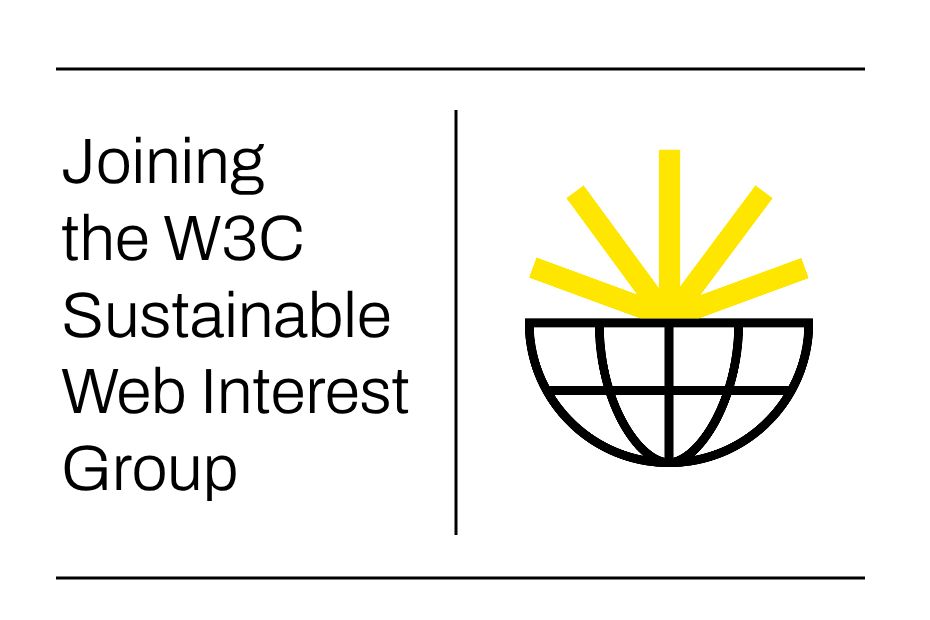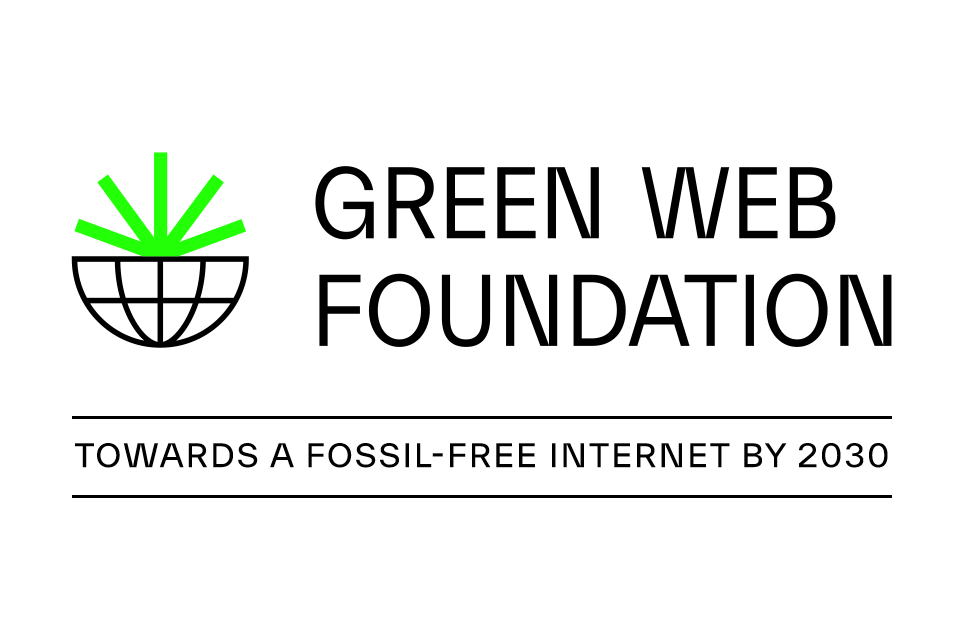Earlier this year, Chris Adams, our executive director spoke at the Green IO London Conference in England, about consensus as a climate lever in digital sustainability. In December it was Hannah Smith, our Director of Operations’ turn to speak, at Green IO Conference Paris. With more than 500 attendees, this was the largest digital sustainability focussed conference so far, and, with more than 30 talks in a single track format, over two days. Hannah’s closing talk is already online in helpful web-first form, with a transcript and bonus links, so in this post we share some of our key takeaways and highlights from the event.
First of all – what is the Green IO Paris Conference?
If you are new to the Green IO Conference series, you can think of it as the event series to accompany Green IO, the podcast and newsletter – one of the essential free sources of information about digital sustainability.
As we have said before in our own Fog Of Enactment report in 2021, and in Branch magazine, the conversation about sustainability in the technology sector in the French speaking world is in many ways more advanced than the Anglophone one.
So, a conference on the subject in the heart of France was likely to attract a lot of fascinating talks by leaders in the field, and a quick look at the line up on the Green IO website, the conference booklet, and now all the uploaded presentations confirms this.
Why was the green web foundation there?
Our staff have been a regular fixture at the Green IO conferences, and you can think of Hannah Smith’s talk, Start at the End as the reverse keynote for the conference. It closed the conference, and left attendees with something to take away and mull over as the year closes. We might be biased, but we think she smashed it. It looks like we’re not the only ones too, if this feedback on social media is anything to go by.
Like we did with other events we’ll share a few highlights and takeways below if you couldn’t make it.


Key takeaways
France is probably the most advanced country in the world for digital sustainability right now
From a legislative and technical point of view, there is just so much exciting work going on in France, and the field of digital sustainability is richer as a result of the uniquely French flavour brought by some speakers at the conference.
One clear example is the opening keynote from Juliette Fropier, the AI lead at the French Ministry of Ecological Transition – From performance to sufficiency: changing the paradigm of AI.
If you’re familiar with the field, you may be familiar with the notion of Digital Sobriety – in France and in the context of AI, you now have FrugalAI, where the goal is to reframe state of the art, away from only ever thinking about performance, and instead taking into account the hard physical limits we need to work within as well.
This is particularly relevant for France, because in Juliette’s talk, we learned that at a national level, carbon emissions in all sectors in France are now either at a plateau, or falling, except for the tech sector, which is growing.
Juliette’s presentation is extremely information dense, and it’s definitely worth a second look.
One special mention should go to the the Frugal AI Challenge – a challenge to technologists using AI to think in terms of sufficiency when trying to solve climate problems. We know that focussing on performance alone can gloss over the fact that a 1% improvement in AI model performance might come at the cost of an order of magnitude greater of energy usage in carbon emissions. Sometimes it might be worth it, but is is always worth it?
With this in mind, the FrugalAI challenge, which is live now, emphasises the resource footprint of an AI model as well as the performance when trying to solve specific problems, to bring this trade-off to the forefront.
In addition, the problems presented as part of the challenge are socially useful ones to solve – we know a warming world has more wildfires to content with, and we know our information ecosystem is polluted by climate disinformation, so those are among the sample problems in the challenge.
Also speaking about AI was new arrival to Paris, Boris Gamazaychikov of Salesforce, speaking about the steps they’ve been taking to weigh up the costs and benefits of AI in their work, as well as the open source Energy Score for AI project with Hugging Face.
Top tip from the hallway track: If you work with AI, and you’re reading this post, you owe it to yourself to get familiar with this Energy Score for AI github repo. It’s a repo containing tooling based on Code Carbon and Optimum benchmark, to create new energy performance leaderboards on Hugging Face, for choosing the best models to use in a wide range of common AI-related tasks.

Companies are increasingly competing on transparency for sustainability reporting
A couple of years back, we presented a talk at FOSDEM called Responsible Clouds and the Green Web Triangle, where we spoke about a trend we saw – that incoming sustainability laws meant that companies would increasingly compete on transparency in sustainability reporting. We thought this would be the case because for the most part:
- it’s still extremely difficult to understand the environmental impact of digital services online
- accurately reporting your organisational carbon emissions is required to comply with the law, as regulations like the Corporate Sustainability Reporting Directive (the CSRD) and other similar legislation come into effect.
Perhaps one of the best examples of this was Scaleway, a French “challenger” cloud presenting their new carbon calculator against established competitors, like Amazon, Microsoft, and Google.
It was not an isolated example. Backmarket is one of France’s “Unicorn” startups, and the same day, they presented a talk about why they switched from Amazon to Google with their talk “We changed our cloud provider on sustainability grounds, here’s why.”
Tip from the hallway track: if you’re the kind of person who really enjoys reading about how to calculate the carbon footpring of cloud services, one thing that came up in chats outside of the talks was a paper by Google researchers called Carbon accounting in the Cloud: a methodology for allocating emissions across data center users. While extremely dense to read, it likely represents the state of the art in how people allocate responsibility for a constantly shifting pool of cloud compute among paying customers. If you get through it, let us know!

People are waking up to the embedded carbon and water impacts of digital services
The final takeway from the conference was the emphasis so many talks placed on the environmental impacts that went beyond just talking about carbon emissions from electricity.
Backmarket mentioned it in passing in their talk about switching cloud providers, as did Scaleway with their talk about cloud calculators. But perhaps the clearest sign of this was the presentation from Dr Deborah Andrews – Meeting or missing targets? Data centres, hardware, Al and sustainability.
Presenting the insights shared from the CEDACI (Circular Economy for the Data Centre Industry) project, Dr Andrews introduced the project, and detailed the lengths the team had to go to get reliable data. This required breaking down servers and other electronics to their raw, foundational materials to verify claims from manufacturers about their environmental impact. In many cases, the impacts were significantly greater than claimed in the product manuals and other documentation – again a problem when you need to report this accurately to comply with the law.
Another key takeway in the extremely detailed presentation, showed how wildly the recycling rates varied with in digital infrastructure like servers.
While some common materials like steel are recycled at fairly high rates now, once you veer away from the most common materials the recycling rates drop right off. Recycling rates for more critical minerals are lucky to get into the low single digit percentage figures at present, and we have a very long way to go to get to a circular digital economy.
However it wasn’t all bad news – one of the outputs from the project was the CEDACI Compass – an open source, online, free resource for helping the industry understand the alternative options available, for buying circular electronics and equipment.

Where next
There are a growing number of physical events in 2025 focussed on digital sustainability, and Green IO is among them. If you want to see which ones we’ll be at, you can find them on our “now” page, and we also list where we’ll showing up in our monthly newsletter.
Other reports and writeups from Green IO Paris
If you didn’t make it to the conference, and want to learn more, there are a number of other write ups online. We’ll list a select few below as we learn about them.



